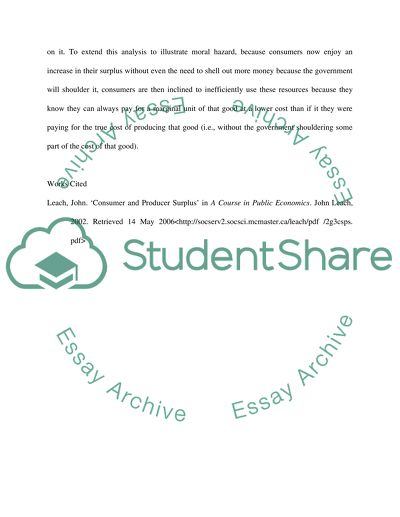Describe the relationship between the concepts of consumer surplus, Essay. Retrieved from https://studentshare.org/miscellaneous/1521426-describe-the-relationship-between-the-concepts-of-consumer-surplus-moral-hazard-and-welfare-loss
Describe the Relationship Between the Concepts of Consumer Surplus, Essay. https://studentshare.org/miscellaneous/1521426-describe-the-relationship-between-the-concepts-of-consumer-surplus-moral-hazard-and-welfare-loss.


